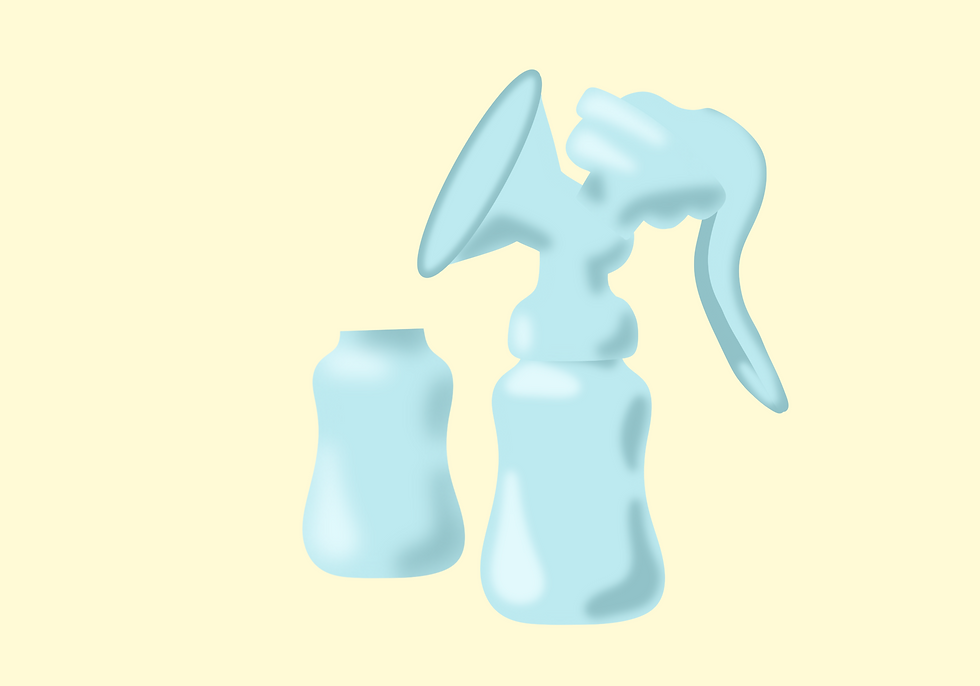EXPRESSING & STORING BREASTMILK
- Pippagina

- Feb 22, 2023
- 3 min read
Updated: Feb 19, 2024
Reasons why you may wish to express your breastmilk

Download a copy of instructions here.
Breast milk is the best food for your baby. But there are times when a mother may be unable to physically breastfeed but there is an option to give her baby her own milk via a bottle or tube. Reasons that you may be unable to breastfeed may be because your baby was born premature and is only able to take your milk via a tube, or your baby may be sick. Some babies are unable to latch and suck at the breast well, but will take milk from a bottle.
If you have an over supply of milk and are uncomfortable then expressing may be helpful with engorgement. Expressing can also be used to help relieve a blocked milk duct or mastitis.
For some new mothers they struggle to provide enough milk for their newborn and expressing can be a method to help increase their milk supply.
Expressing milk enables your partner to be able to help feed your baby and give you a little rest. As the baby gets older expressing milk gives you a little more freedom, and for many women allows them to still to give their baby breastmilk when they go back to work.
HOW CAN I EXPRESS MILK?
Many women find that their milk supply and therefore success at expressing milk is better early in the morning. Expressing milk is often easier when you are relaxed. Try playing relaxing music or watching the televiison; dim the lights and have a warm drink . Warming the breasts with a warm cloth or shower before commencing pumping can also make pumping more successful.
Milk can be expressed
by hand,
by a hand pump
by a battery operated pump or an electric pump
HAND EXPRESSING
Wash your hands, sit yourself in a comfortable position and have a wide mouthed sterile container to collect the milk. In the early days when you are only expressing colostrum then expressing milk into a syringe works best; your Hebamme/midwife will be able to help you with this.
Commence massaging the whole breast starting from the outside and working towards the nipple, taking care not to drag the skin.
Putting your forefinger and your thumb in a ”C” position, put them at 12 O’ clock and 6 0’ clock position on the edge of the areolar (this is the dark skin of the nipple), gently press in rhythmic movements. When the milk flow slows down re position your finger and thumb, as if moving them around a clock face.
BREAST PUMP - Hand or Electric.
There are many pumps on the market, and the choice is totally personal. For ladies who wish to only pump occassionally, a hand pump may be sufficient. For a Mother where her baby was born prematurely or will only take milk from a bottle and she needs a good supply of breast milk each day then a electric pump that you can buy, or rent from the apotake is probably more suited.
MILK STORAGE
When pumping milk always label the bottles or bags with the amount and the date it was pumped, this way you can track and manage your stored milk.

DEFROSTING FROZEN MILK
You can defrost the milk slowly in the refrigerator or at room temperature. Once it has been defrosted you can keep it up to 24hours in the refrigerator and up to two hours at room temperature. Do not refreeze frozen milk.
Milk can be transported within 24 hours provided fridge temperatures are maintained using an insulated cool bag/box and frozen ice packs.
WARMING BREASTMILK
To warm your milk, place the breast milk bottle or bag into a cup, jug or bowl of lukewarm water for a few minutes to bring it to body temperature -37 °C. Alternatively, you could use a bottle warmer. Do not allow the temperature to go above 40 °C .
Do not use a microwave, as this can overheat your milk and potentially cause mouth and throat burns to your baby.Once defrosted it should be discarded once it has been out of the refrigerator longer than two hours.

Comments